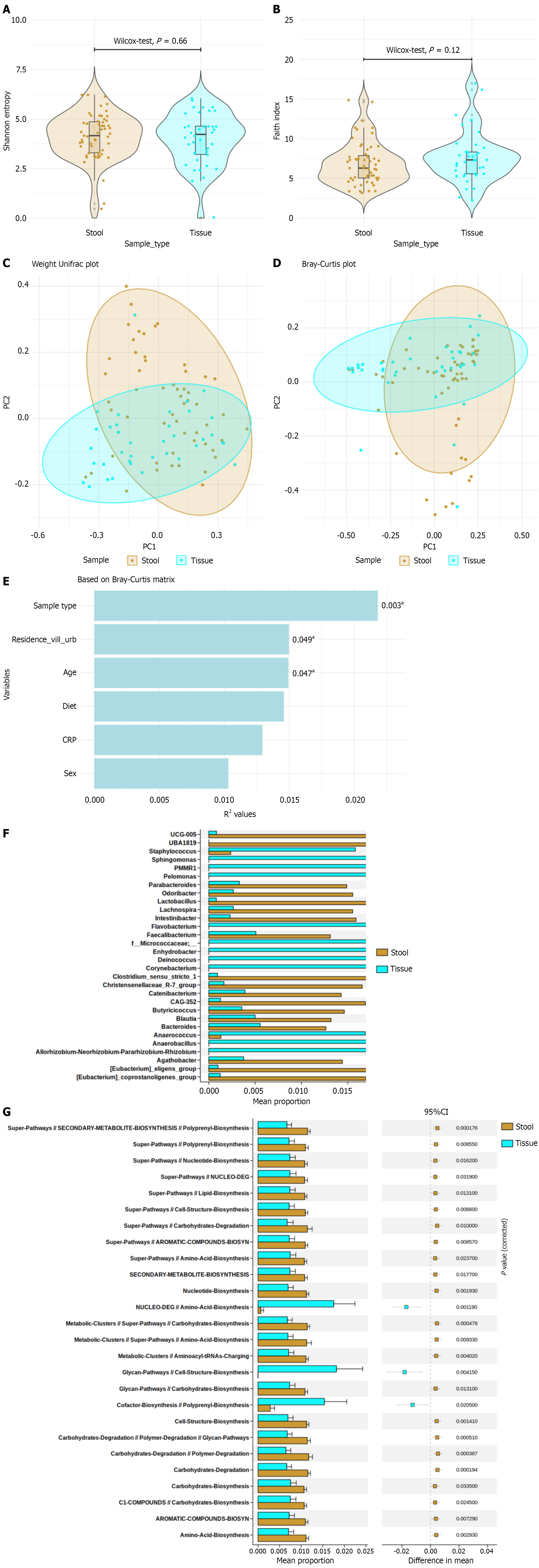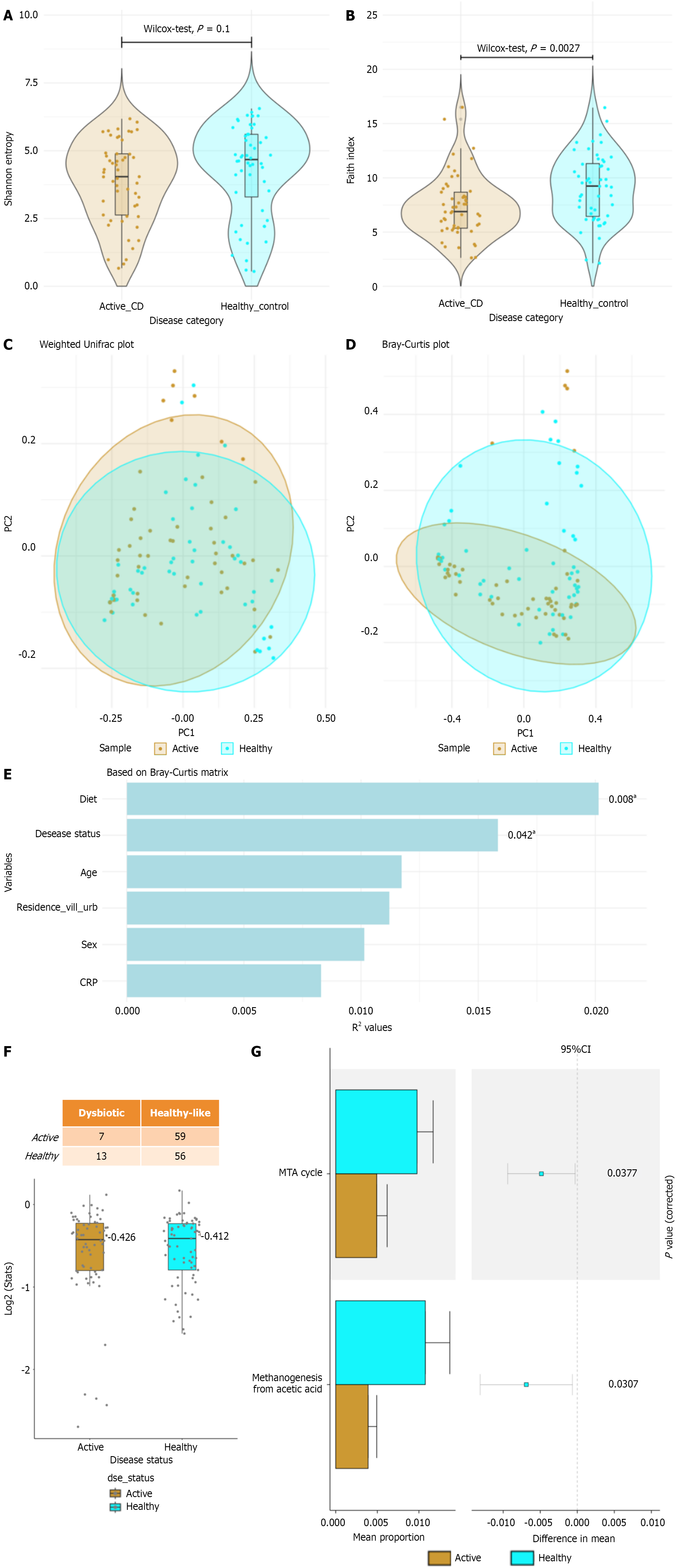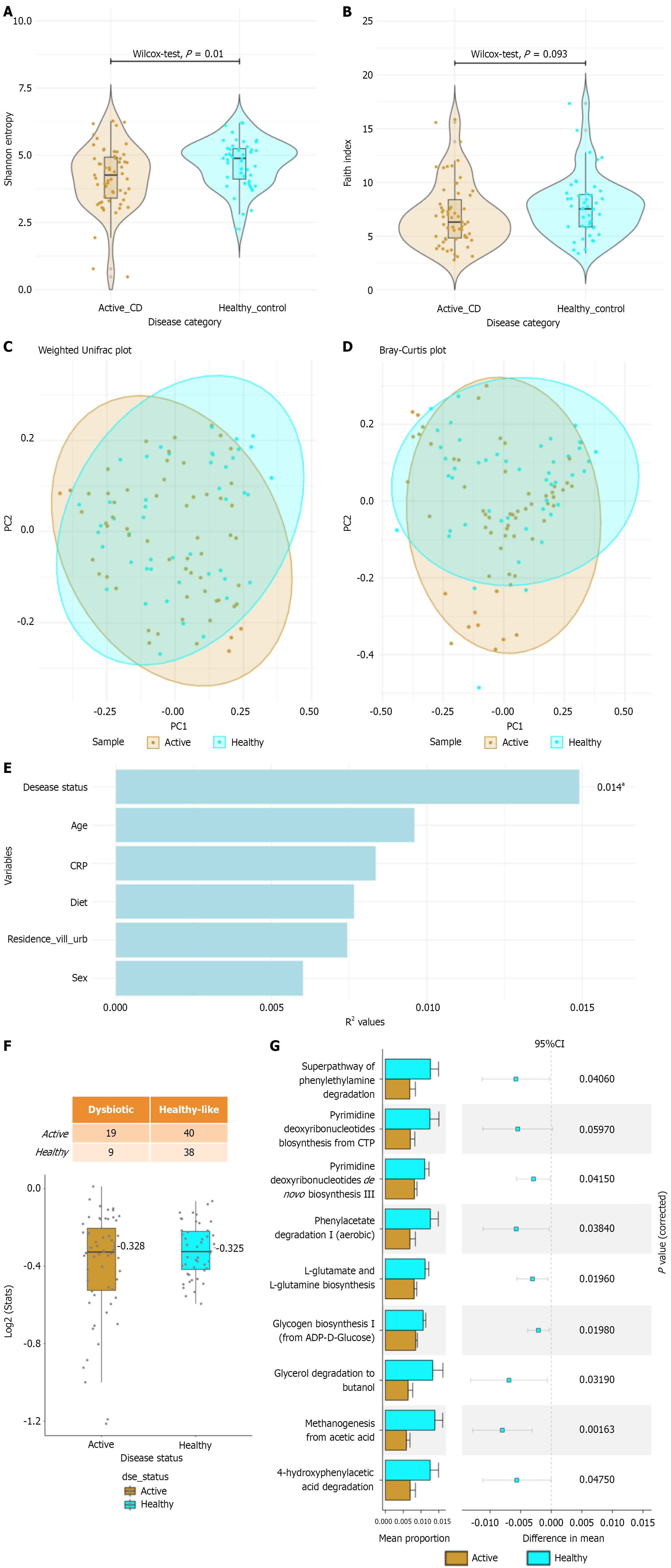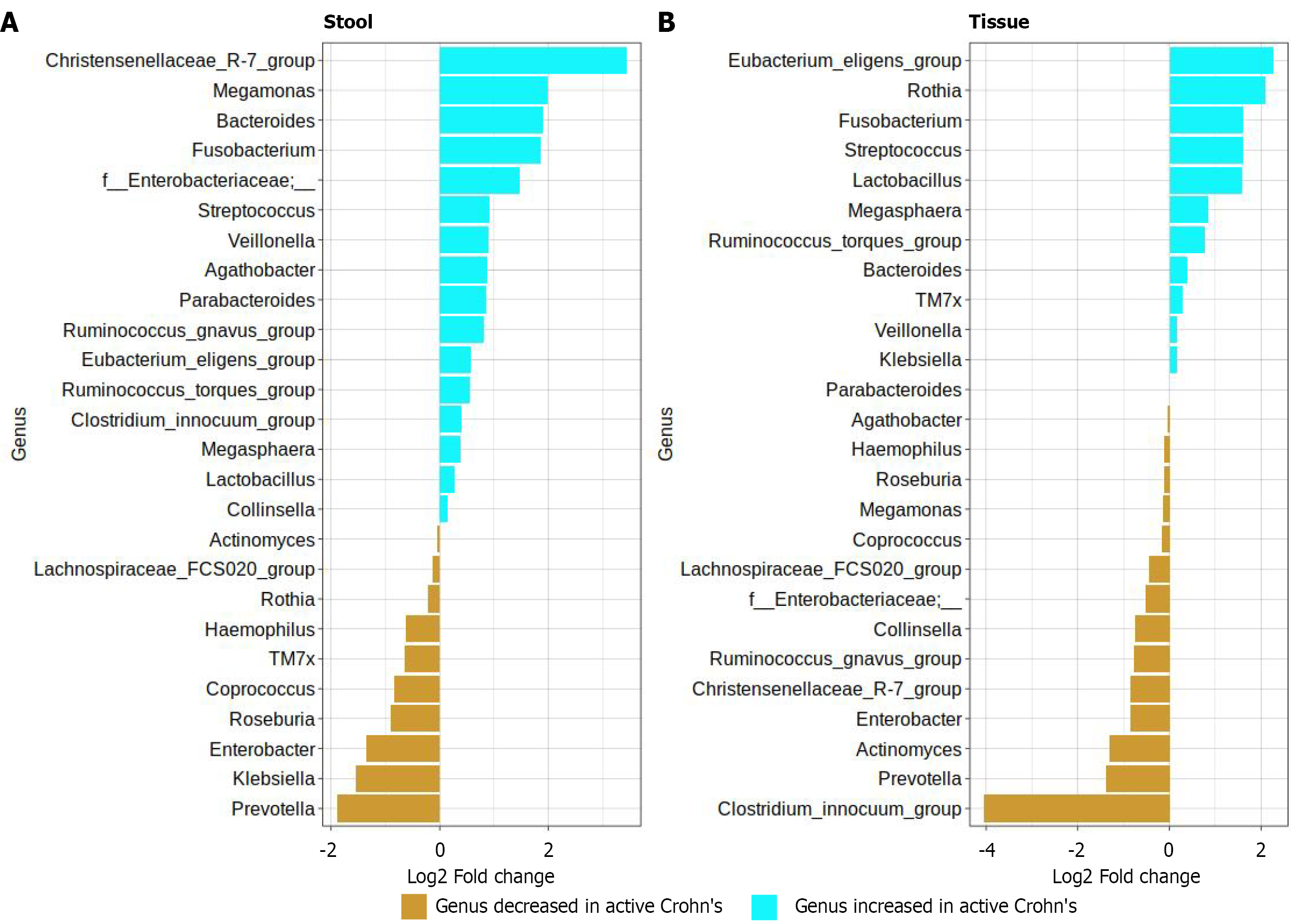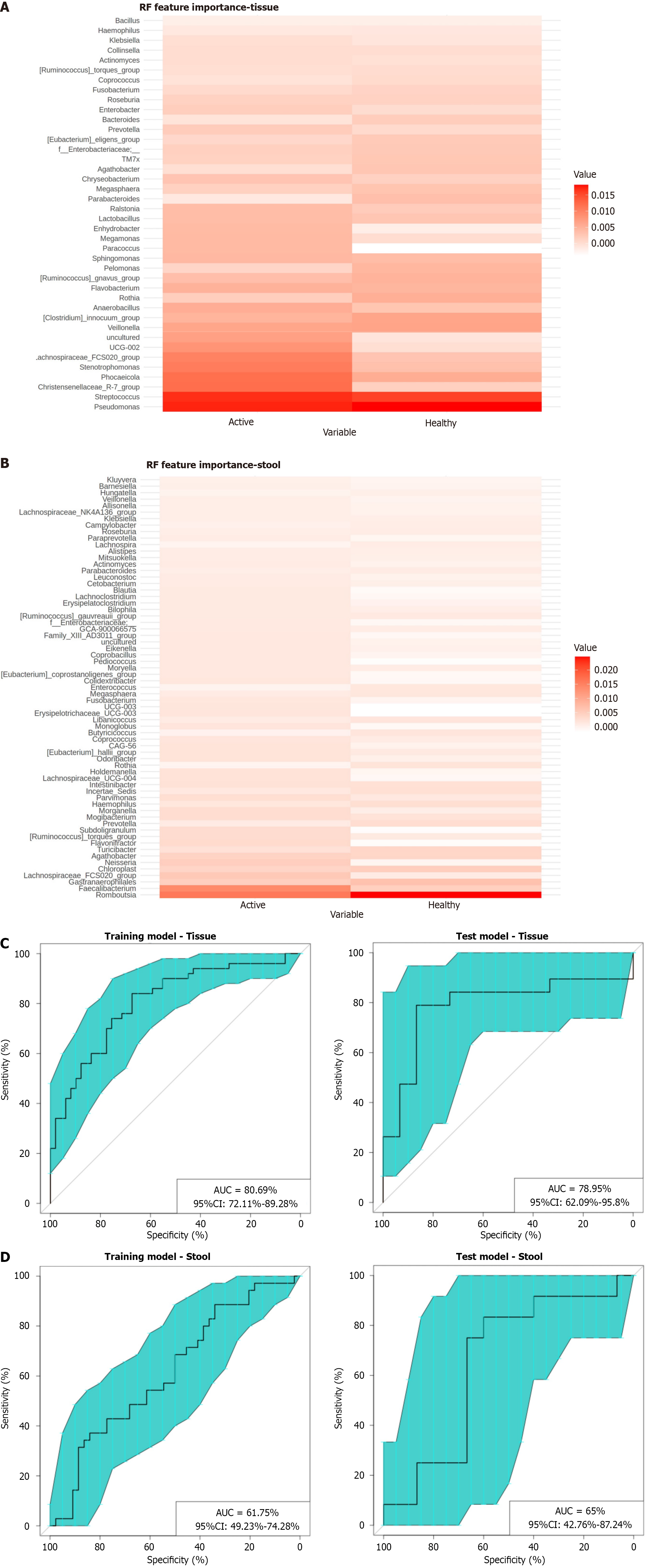Copyright
©The Author(s) 2025.
World J Gastrointest Pathophysiol. Sep 22, 2025; 16(3): 108058
Published online Sep 22, 2025. doi: 10.4291/wjgp.v16.i3.108058
Published online Sep 22, 2025. doi: 10.4291/wjgp.v16.i3.108058
Figure 1 Comparison between tissue and fecal bacteria in patients with active Crohn’s disease.
A and B: Violin plot showing Shannon’s alpha diversity and Faith phylogenetic alpha diversity; C and D: Principal coordinates analyses plots based on weighted Unifrac distances and Bray-Curtis dissimilarity estimates; E: Factors affecting bacterial composition; F: Bacterial genera with significant differences in relative abundance between tissue and stool samples; G: Differentially abundant functional pathways between tissue and stool sample.
Figure 2 Comparison between tissue bacteria in patients with active Crohn’s disease and healthy controls.
A and B: Violin plot showing Shannon alpha diversity and Faith phylogenetic alpha diversity; C and D: Principal coordinates analyses plots based on weighted Unifrac distances and Bray-Curtis dissimilarity estimates; E: Factors affecting bacterial composition; F: Presence of dysbiosis based on cloud-based LOcally linear unbiased dysbiosis test; G: Differentially abundant functional pathways between Crohn’s disease and healthy controls.
Figure 3 Comparison between fecal bacteria in patients with active Crohn’s disease and healthy controls.
A and B: Violin plot showing Shannon alpha diversity and Faith phylogenetic alpha diversity; C and D: Principal coordinates analyses plots based on weighted Unifrac distances and Bray-Curtis dissimilarity estimates; E: Factors affecting bacterial composition; F: Presence of dysbiosis based on cloud-based LOcally linear unbiased dysbiosis test; G: Differentially abundant functional pathways between Crohn’s disease and healthy controls.
Figure 4 Bacterial genus increased and decreased in stool and tissue samples.
A: Bacterial genus increased and decreased in stool samples of patients with active Crohn’s disease compared to healthy controls; B: Bacterial genus increased and decreased in tissue samples of patients with active Crohn’s disease compared to healthy controls.
Figure 5 Bacterial predictors of disease state (active Crohn’s disease and healthy state) in tissue and stool samples.
A and B: Random forest analysis showing bacteria predicting active Crohn’s disease and healthy state in tissue sample and stool sample; C: Receiver operating characteristic curve showing ability of top 40 operational taxonomic units in tissue sample selected based on random forest analysis to discriminate between disease and healthy state; D: Receiver operating characteristic curve showing ability of top 65 operational taxonomic units in stool sample to discriminate between disease and healthy state. AUC: Area under curve; CI: Confidence interval.
- Citation: Dutta AK, Abraham D, Praharaj I, Benny B, Govindan K, Zondervenni Z, Joseph A. Dynamics of tissue and fecal microbiota in active Crohn’s disease and their ability to predict disease state. World J Gastrointest Pathophysiol 2025; 16(3): 108058
- URL: https://www.wjgnet.com/2150-5330/full/v16/i3/108058.htm
- DOI: https://dx.doi.org/10.4291/wjgp.v16.i3.108058













